e drive from Lhasa to Everest Base Camp Tibet (EBC) covered four days and three nights round trip in Fall 2018. The primary objective was viewing Everest at sunset. Due to the vagaries of weather, attaining that objective was always problematic. However, any good road trip is as much about the journey as the destination. In this instance, beautiful sights and interesting places across the high Tibetan Plateau guaranteed that this journey would be epic irrespective of the weather at Everest.
This trip was arranged through a Tibet travel agency, Tibet Vista. There is no independent travel in Tibet. Our transportation was via an eight-person minivan. It was comfortable enough on the drive for our group that consisted of five tourists, a driver and tour guide. Our route is highlighted below with magic marker TripTik style the way AAA (American Automobile Association) route planners used to do it.

Lhasa to Shigatse
The route initially followed the Lhasa River.



We weren’t on the road long before encountering the first of several police checkpoint. China forcibly took over Tibet in 1950. Tibet, technically the Tibet Autonomous Region, is a Chinese province. China likes the word autonomous. There are the Special Autonomous Regions of Hong Kong, Macau and Tibet. There just doesn’t seem to be much autonomy that goes with the title.
Many Tibetans aren’t happy about it, including the Dalai Lama who is in exile and subject to arrest upon returning. The Dalai Lama is still regarded by many locals as their spiritual and political leader. Political discussions, other than praise for the Communist Party, can lead to summary arrest.

China is very paranoid about the possibility of dissent. Accordingly, China closely monitors activities and movements of Chinese, Tibetans and foreigners. At these checkpoints foreigners must produce passports and Tibet Travel Permits, a kind of visa to be allowed access to this province. Chinese and locals are required to produce their IDs.
Usually, our guide was able to take our passports and permits inside for inspection. Other times everyone had to dismount to be vetted individually.

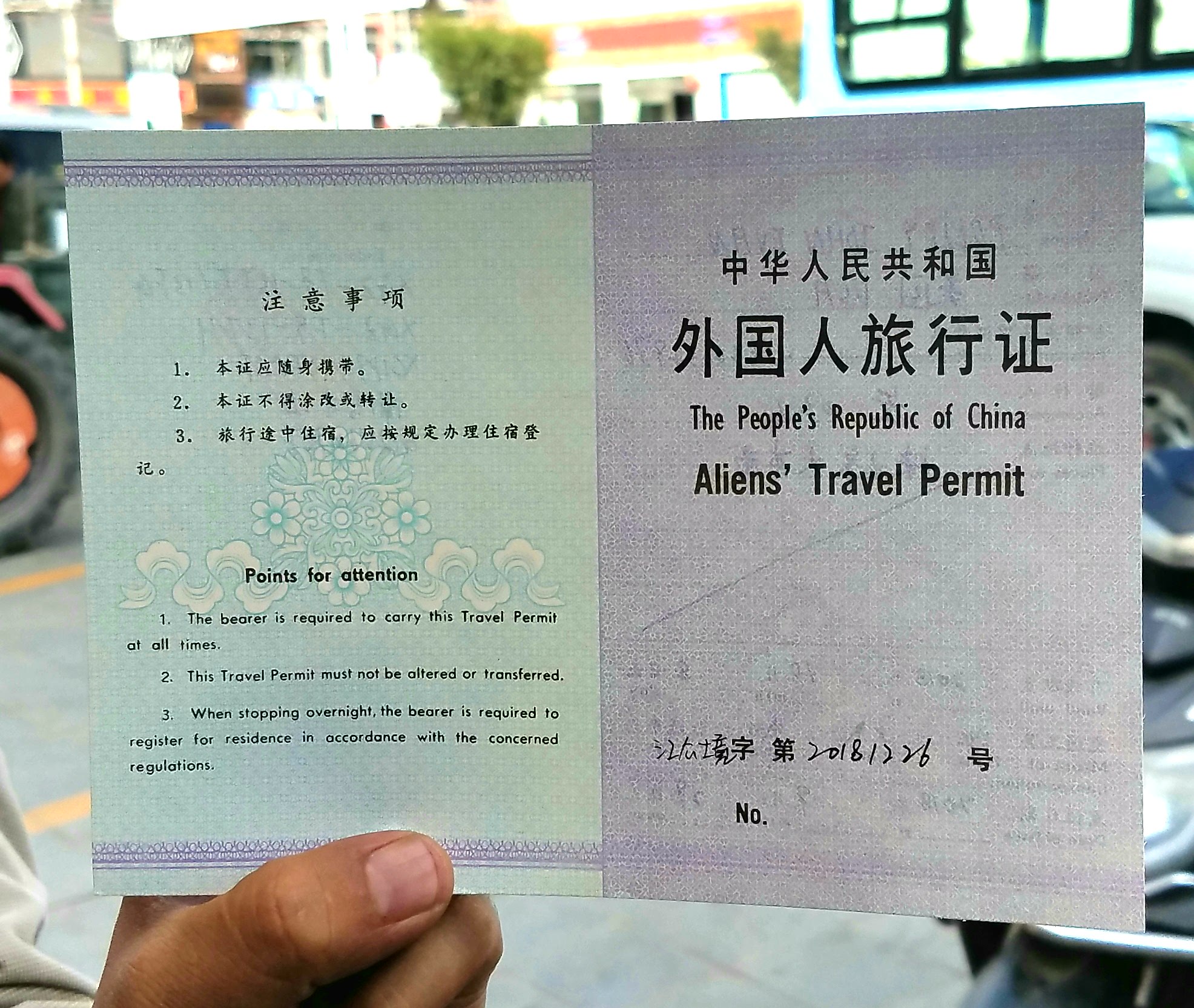
The road is a modern two-lane highway with a passing lane in some places. It is paved the whole way to EBC except for a mile or two between Lhatse and Tingri. The road is one of China’s infrastructure upgrades to demonstrate its benevolence to the locals. I must say infrastructure in Tibet is much better than what I saw in Nepal in 2016.
Yamdrok Yumtso
Yamdrok Lake lies about halfway between Lhasa and Gyantse. It is large and irregularly shaped. The bright turquoise color is striking. Yamdrok Lake is one of three main sacred lakes of Tibet.

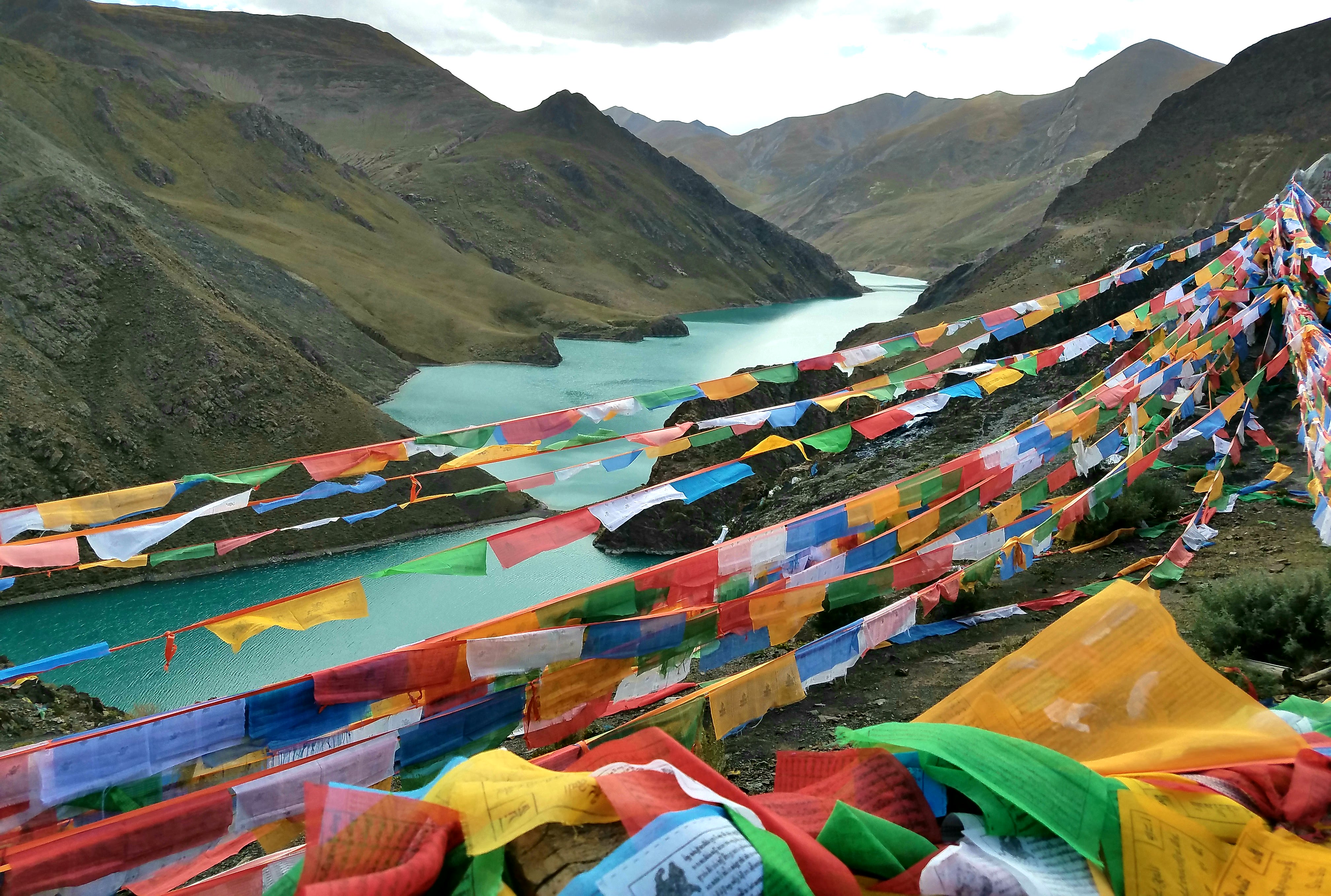
You can buy souvenirs, grab a bight to eat, and have a photo with a Tibetan Mastiff or yak.

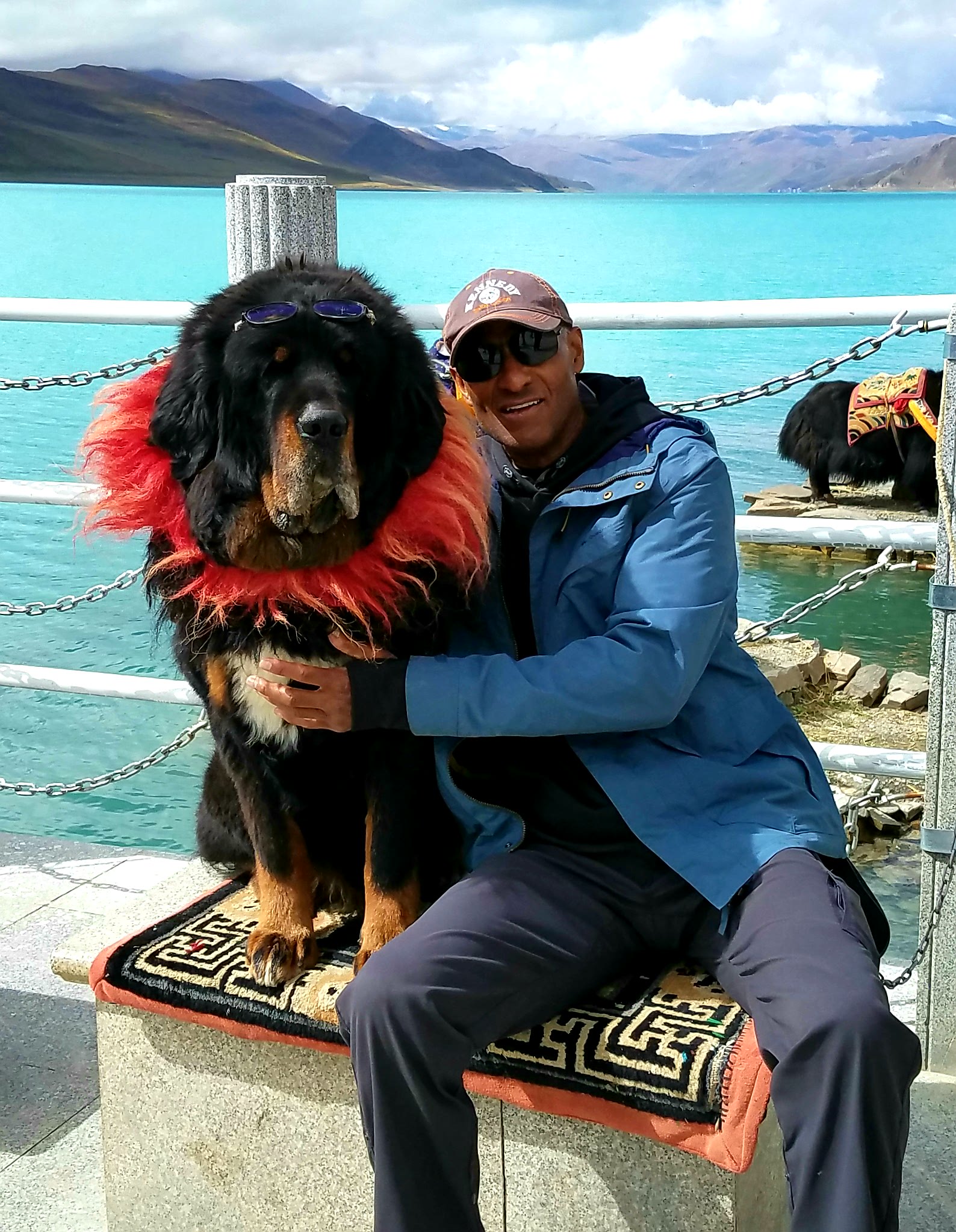
At one of the passes seemingly friendly but evil looking mini goats were approaching tourists hoping for food. Their horns are like steel. I had no food and didn’t want to upset them and get gored.

Passing through Gyantse we could see Gyantse Fortress built in 1390 as a Lhasa military outpost.
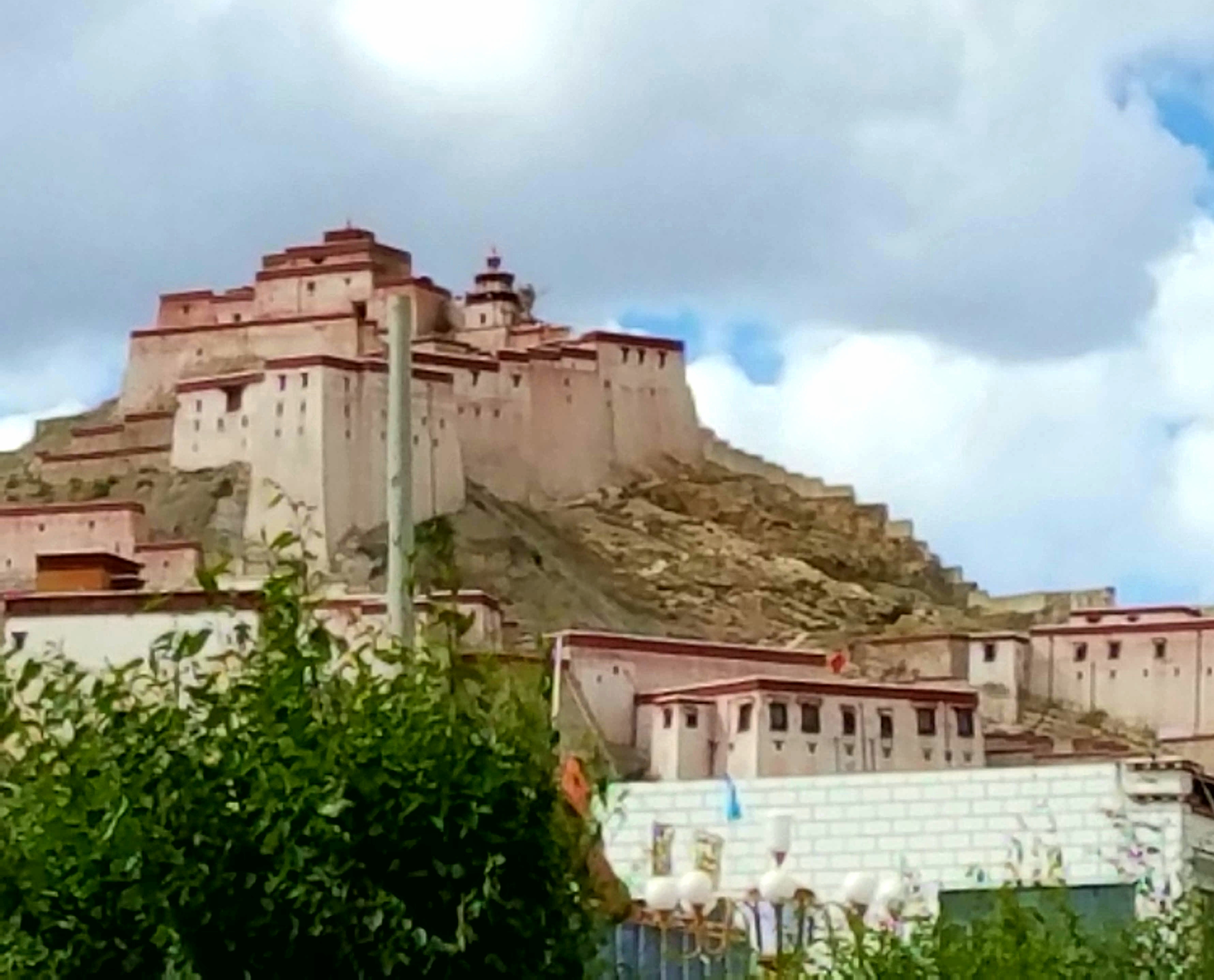
Shigatse
After seven hours of driving and sightseeing, we spent the first night on the road in Shigatse, Tibet’s second largest city. Accommodations were provided at Tashi Choeta Hotel. This hotel is very similar to our hotel in Lhasa. I had a single room. Like most tours, single occupancy comes with a slight surcharge. We stayed here on the return as well.

Tashi Lhunpo Monastery
In 1447, the first Dalai Lama founded Tashi Lhunpo Monastery just outside Shigatse. It serves as the home of the Panchen Lamas who are important figures in the Gelug branch of Tibetan Buddhism. The Panchen Lama is second in importance only to the Dalai Lama on spiritual matters.
The Panchen Lamas remained in Tibet after 1950 and did not openly object to Chinese rule. Still, many buildings in this monastery and many others were extensively damaged in the Chinese Cultural Revolution 1966 – 1976.

Again, no photos are allowed in the rooms of the monastery. The interiors are beautiful but hard to describe.
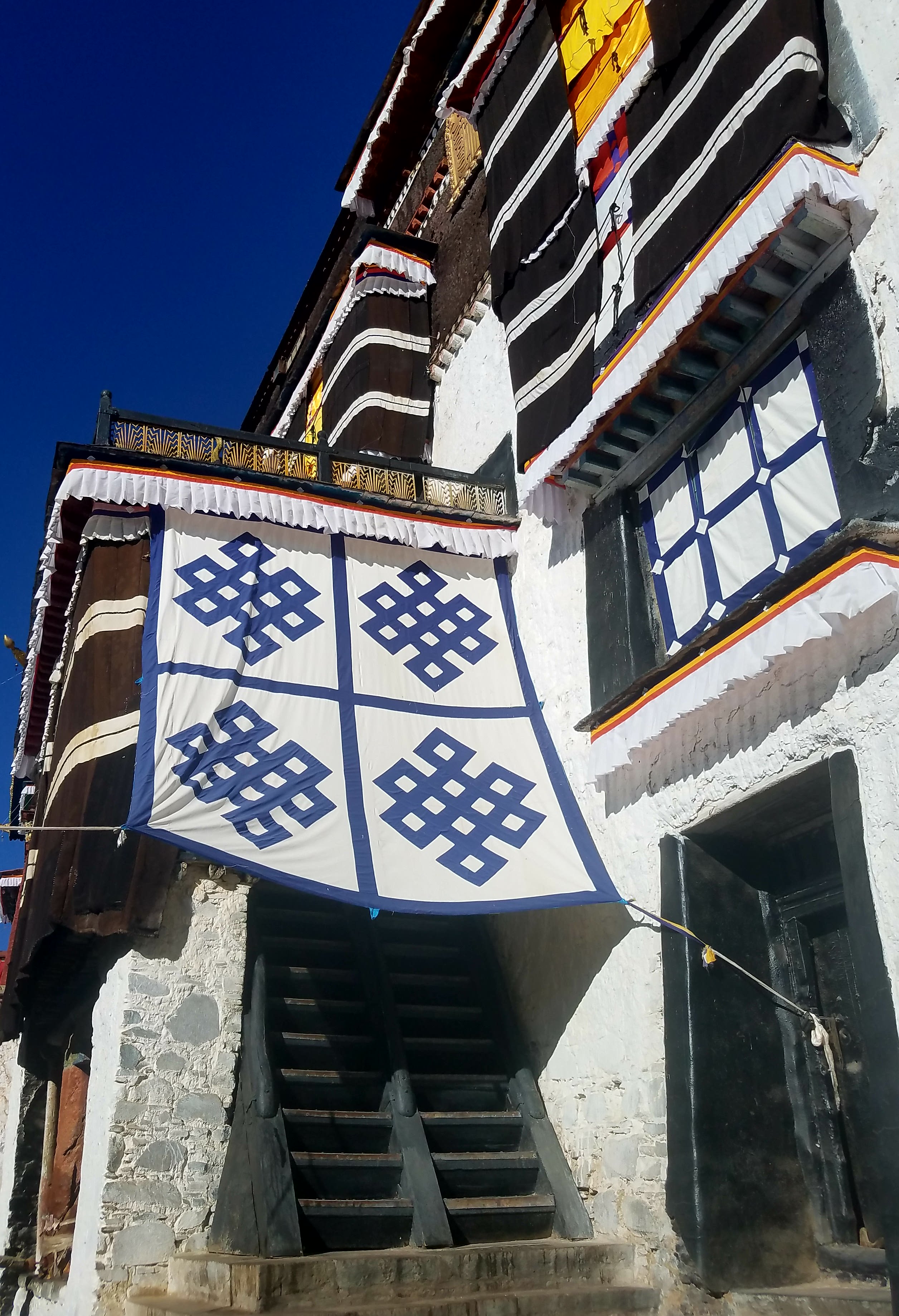
Below is one of our group trying her hand at the way monks polish the floors. I could barely move the bag. Traci could not budge it no matter how hard she tried.

On To Everest
The Tibetan plateau averages between 4000 – 4500 meters in elevation. It was a little surprising that while there are mountains along the route, most are not significantly higher than the rest of the terrain.

Much of the land is devoted to agriculture and livestock.


Livestock have the right of way on the road, and they know it.

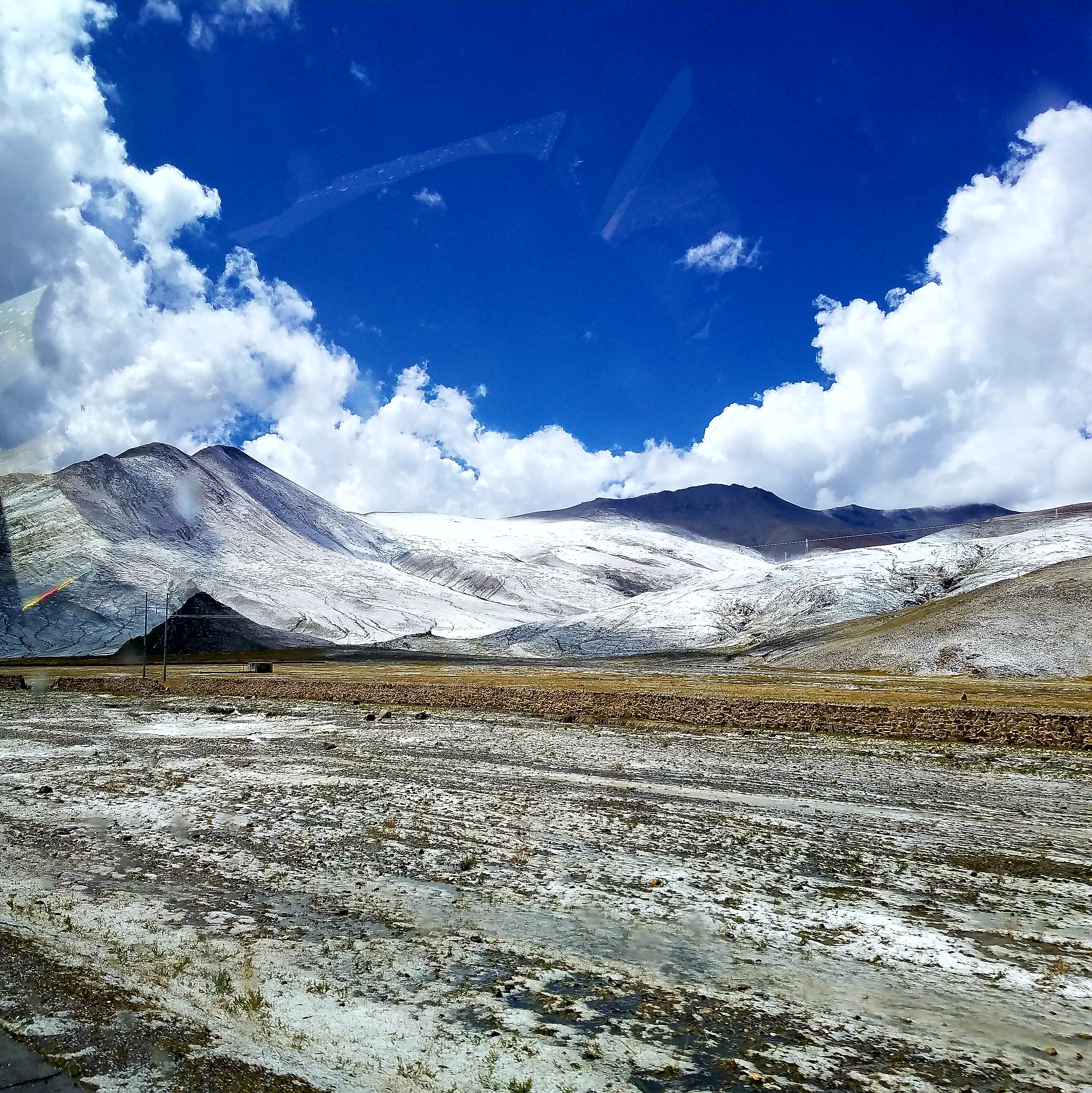
Food
We ate dinner in Shigatse twice. It has a good selection of Chinese, Tibetan, Nepalese and Indian restaurants. The problem was communication as neither the menus nor the staff generally had English. On the road, we stopped a little mom & pops in small villages.
These meals were inexpensive and delicious.
Karola Glacier
Desceding from Kangbala pass we stopped to view Karola Glacier. Karola Glacier extends from the flanks of Mt. Noijin Kangsang (7,191 meters), which is one of the four holy mountains of Tibet. The elevation here is about 5,000 meters.




There is a point on the road that is 5000 kilometers from Shanghai. Traci, who had grown up there, recognized a number of Shanghai license plates along our route. That would be quite a road trip!

There is a very short section where the highway disappears. It is essentially off-road driving. I was surprised when a Lamborghini passed us here and grabbed my phone for a quick photo. We are driving on just dirt and rocks here. Sports cars like that don’t have much ground clearance. I guess if you can afford the outrageous purchase price of a Lamborghini, you can also afford the outrageous costs to get one repaired.
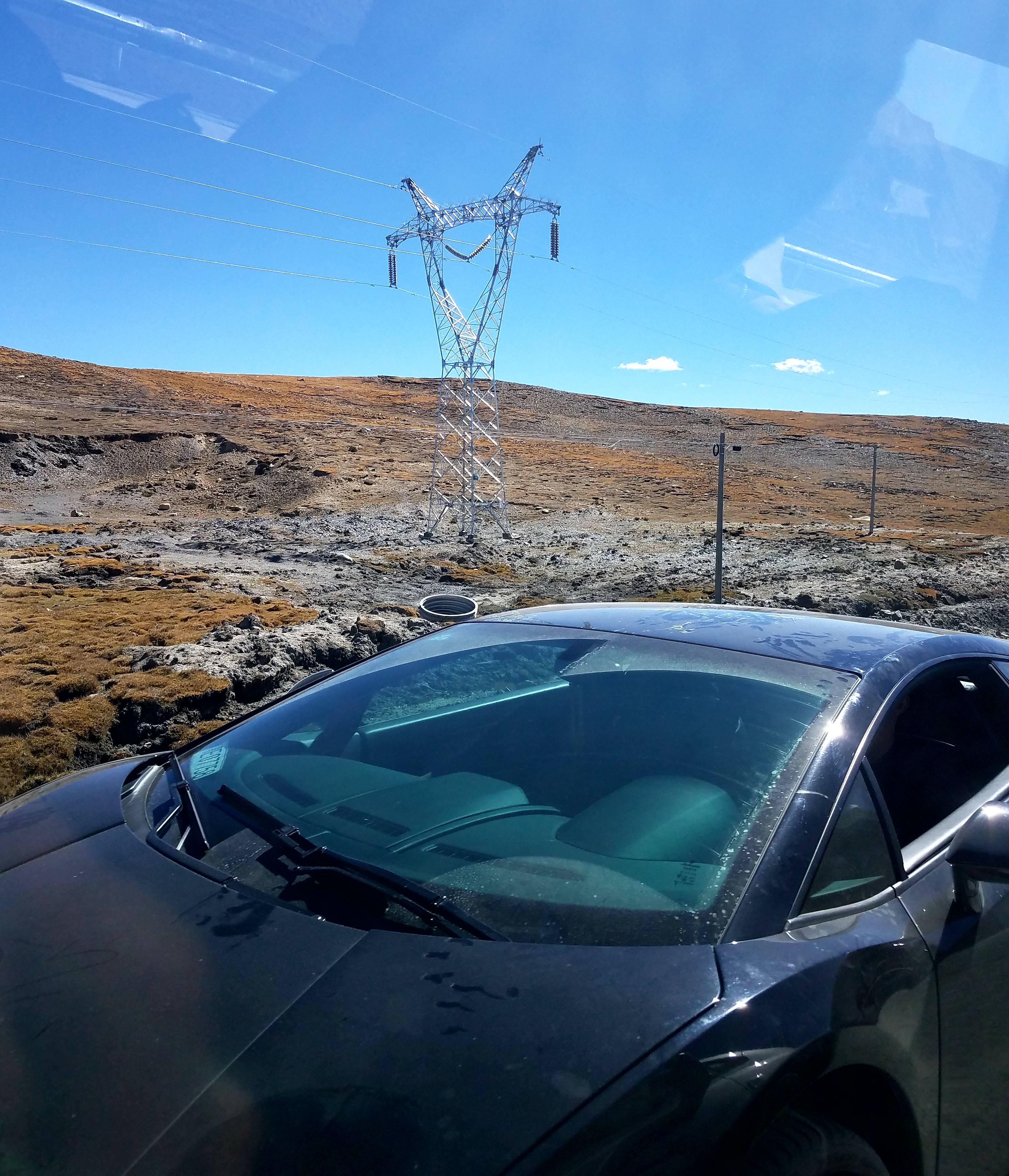
Everest National Park
Gyasto La Pass (5200 meters) is the gateway to Everest.


Gawu La Pass
Proceeding into the park the road uses numerous switchbacks to climb to Gawu La Pass, the first point on the trip where the Himalayas and Everest could be seen. 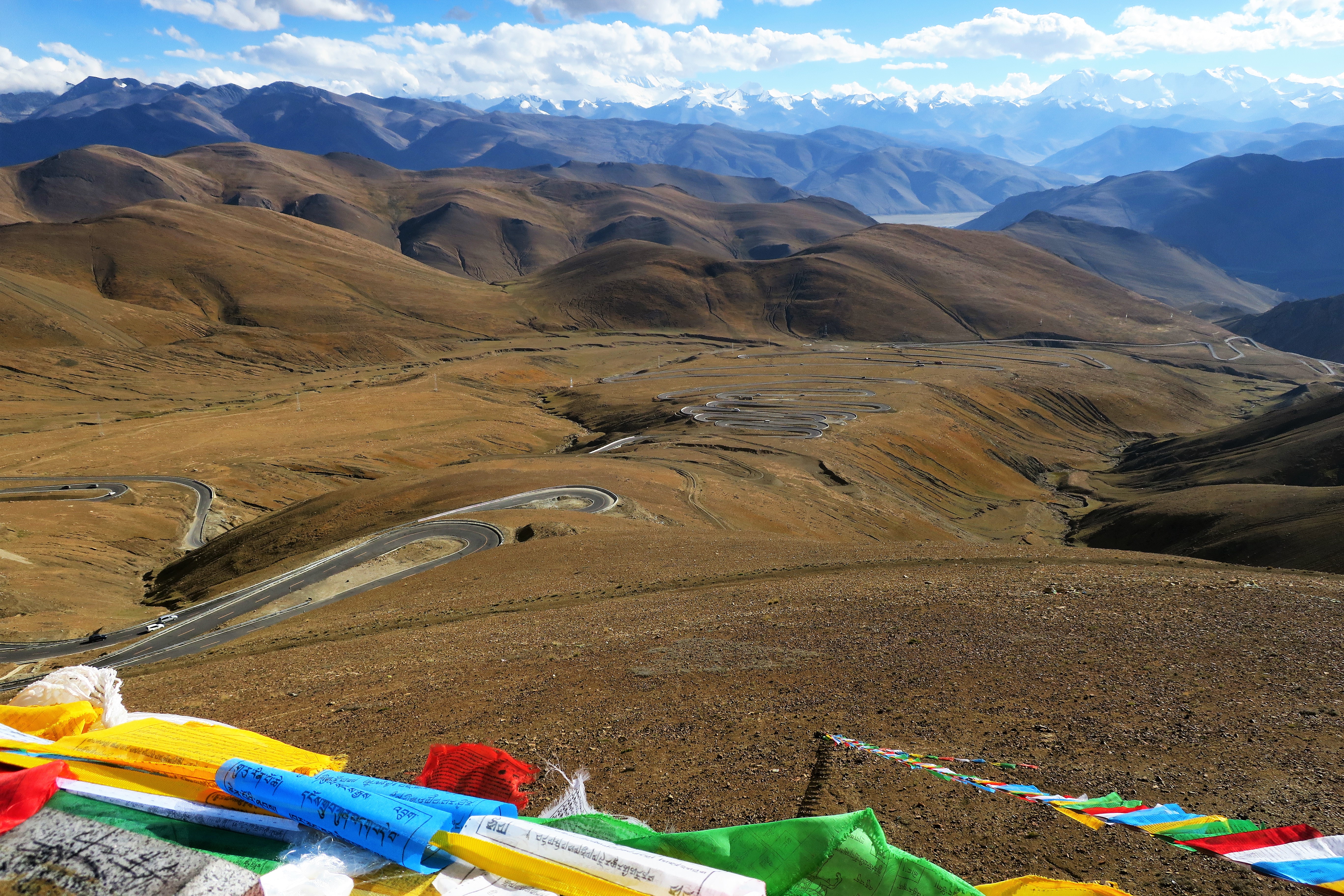
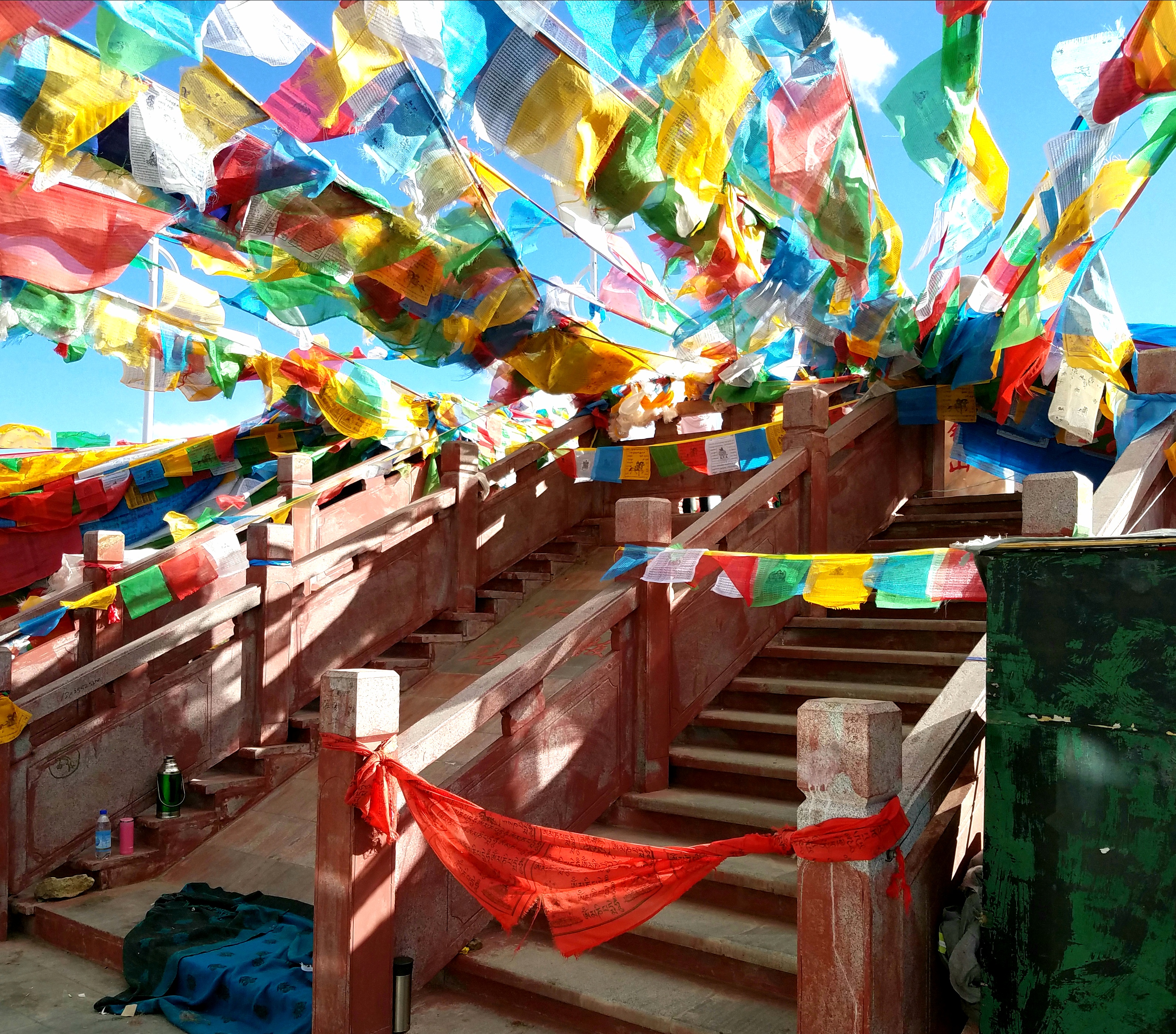
Clouds obscured the peaks. Arriving was still cause for celebration. It had been a very, very long and amazing journey from Charlotte, NC. The goal, EBC, was only one hour away!

This is the view of Everest when we arrived at EBC.
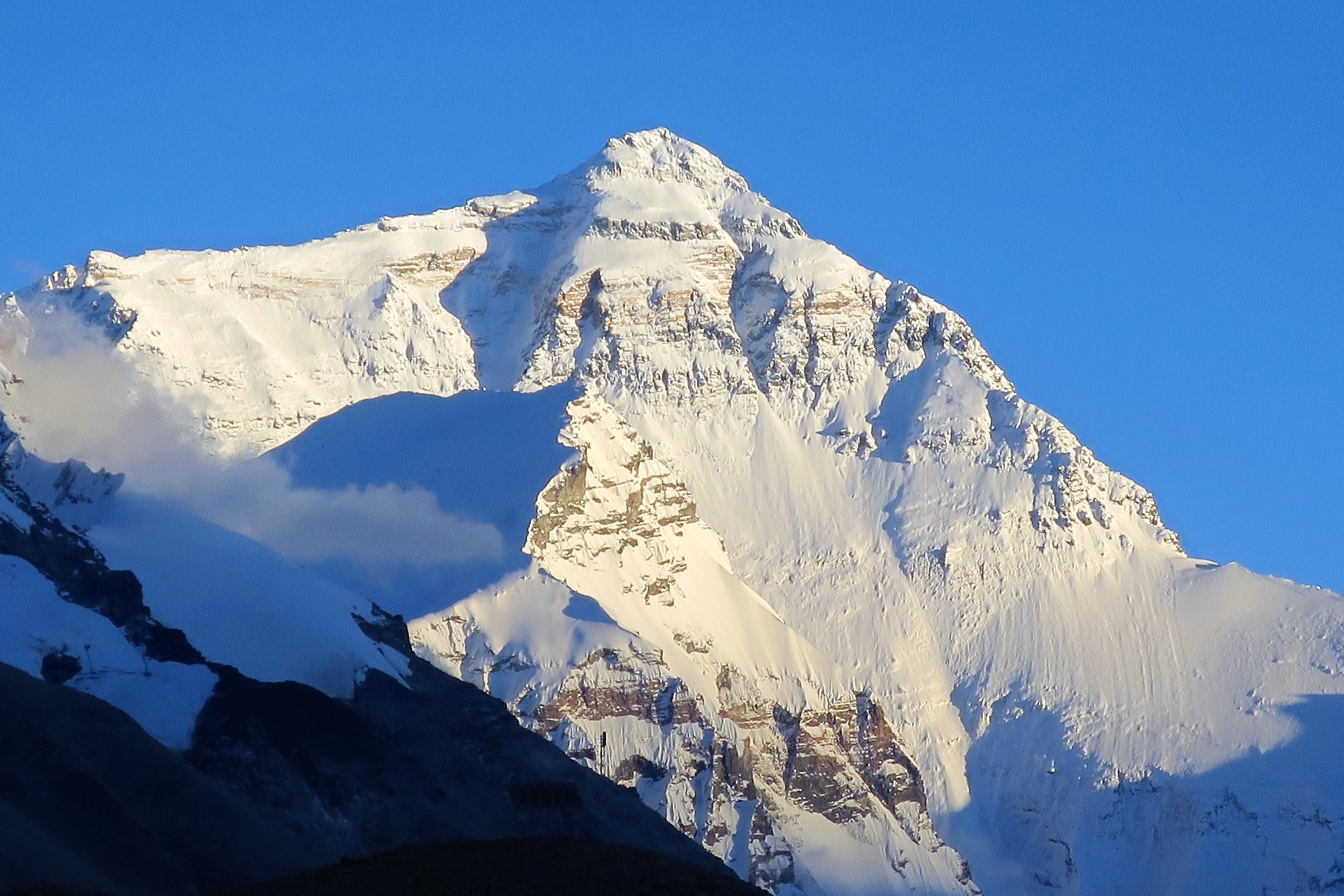
Clouds were clearing just in time for sunset. We were lucky. Check out the view at sunset and read about EBC here.

An incredible sunset was the prelude to Mother Nature’s nighttime planetarium show. I marveled at the darkest, clearest, most spectacular night sky I’d ever seen. A bright star cloud, the disc of our Milky Way Galaxy, arced from horizon to horizon. Views like that have been stirring imaginations since… the first imaginations.
The next morning we left EBC while it was dark to view sunrise from Gawu La Pass. We saw some of the Himalayan peaks that were obscured the day before. From this spot you can see four of the six highest mountains on the planet.

Sunrise was pretty but not as beautiful as sunset. Maybe it was just the cold.

The temperature dropped overnight. Being out of the van for 20 minutes was my limit.

Lunch In a Private Home
On the way back to Lhasa after spending the night in Shigatse, we stopped at a private home for lunch. It was one of the highlights of my time in Tibet. The home was beautiful, and our host was very gracious.


Our guide read some of the prayers before lunch.
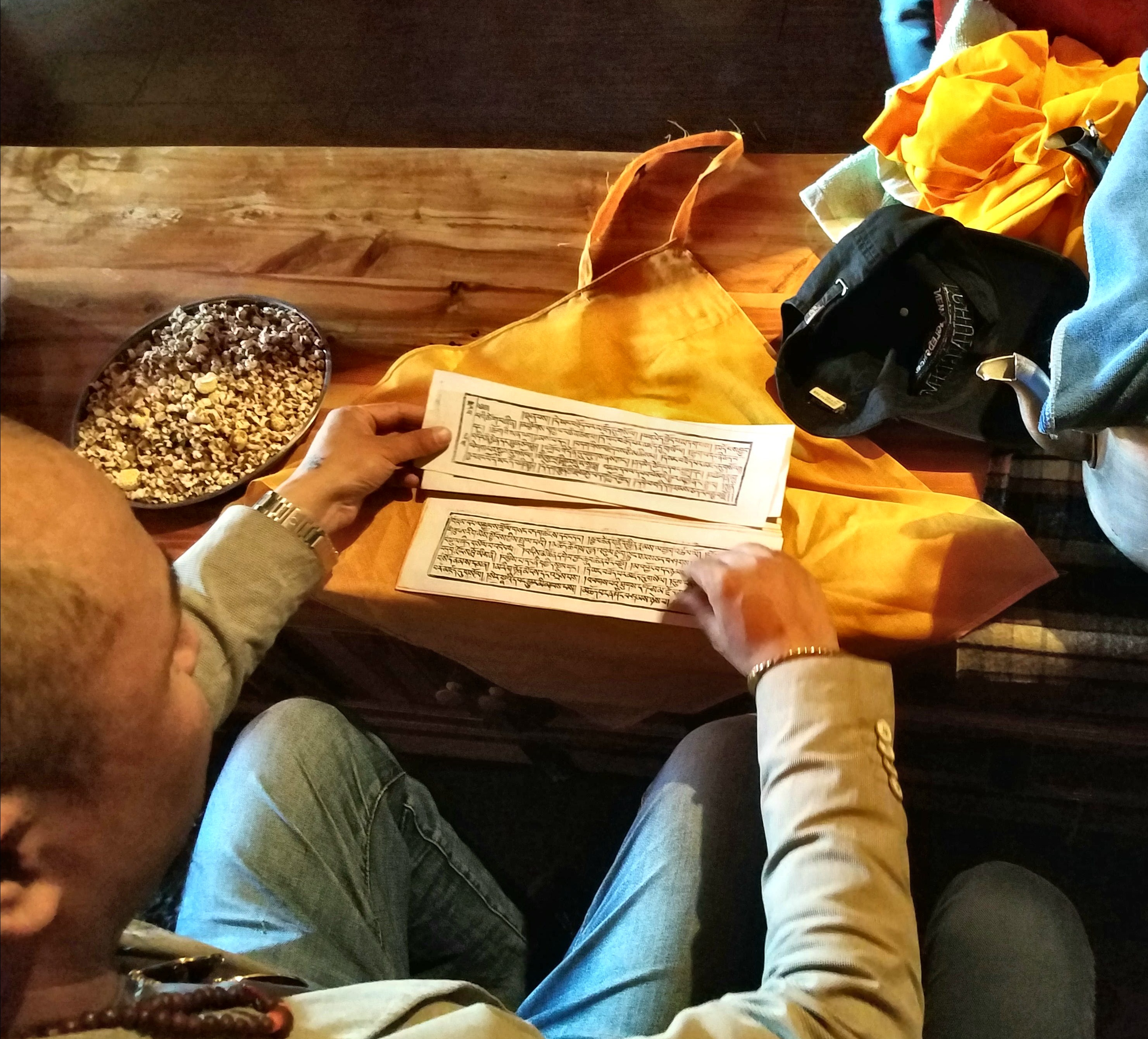
Our host prepared a traditional meal and even treated the group to a couple of lovely Tibetan ballads.

The meal was healthy and satisfying.

Overall Impression
This was an outstanding road trip. Our guide was knowledgeable and cordial. The group got along well even though we were couped up in a minivan for three days. It was fortunate that EBC is so far from Lhasa because the trip there and back afforded the opportunity to observe gorgeous scenery and experience and learn some of the culture of Tibet.


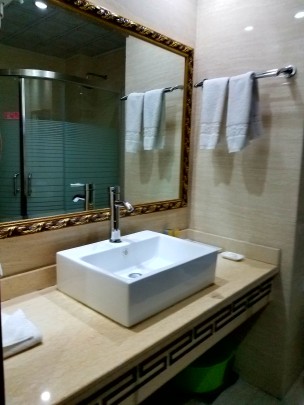








What an amazing road trip! I love the mountain views, the huge dog, the monastery and the colourful local home 😀 The security challenges and ban on political discussion sound not unlike travelling in North Korea, although there only locals have to produce papers at the roadside checks – tourists are treated as honoured guests and not subject to such indignities 😆
LikeLiked by 1 person
North Korea is a place that would be neat to see although I think there must be difficult to get a visa.
LikeLiked by 1 person
Only for Americans (the US government forbids travel there although the DPRK would permit it) and South Koreans. Oh, and journalists from any country! We had no problems at all, although you have to be booked on an organised tour before applying.
LikeLiked by 1 person
I’m guessing the Americans who manage to go have a different experience.
LikeLiked by 1 person
I’m not so sure. The North Koreans are very keen to show their country in the best possible light and there are set itineraries all tours follow and lots of designated sights that almost everyone sees (depending on which parts of the country they go to) that if an American WERE able to get permission to visit and join a tour they would see exactly what everyone else sees 🙂 But at the moment the US forbids travel to the DPRK on a US passport and you risk forfeiting it by travelling. The only real option at the moment is if you have a dual-nationality and use your other passport, in which case you would be welcomed on a tour and able to see everything included on it.
LikeLiked by 1 person
I’m not sure the DPRK wants a lot of American tourists. Some Americans used to go. A few wound up as hostages for allegedly breaking rules. One died. Now nobody gets to go ( with a few special exceptions). I’d love to be able to get permission to go and to see the country. I’d just want to be sure I could leave when I wanted to.
LikeLiked by 1 person
Maybe one day it will be feasible. You do have to accept their rules and follow them 100% – if you’re not prepared to do that you shouldn’t go. But those who do follow them get a warm welcome and a fascinating insight into the country even though of course that insight is carefully controlled by the regime. Have a look at some of my posts about our visit if you’re interested. I hope one day you do get to go!
LikeLiked by 1 person
I can’t wait to see your posts. Visiting DPRK must have been a special experience.
LikeLiked by 1 person
Stunning photos of Everest – you were fortunate to have such clear skies. Most enjoyed your visit to the private home, this is such a treat when traveling. We didn’t do the base camp trip but went from Lhasa to Namtso lake and were stopped many times at checkpoints. The military presence in Lhasa was scary.
LikeLiked by 1 person
I scheduled the trip for late September/early October which is the best time along with April/May. Still it is always fortunate to have clear skies around Everest. The checkpoints are very annoying. When I was there, military in Lhasa wasn’t oppressive but that could easily change I’m sure.
LikeLiked by 1 person
The mountains look majestic!
LikeLiked by 1 person
Truly the roof of the world! 😊
LikeLike
Reblogged this on turkmed and commented:
I did more or less the same road trip in 2009 did not take the turn off of to the EBC. I was part of a tour group consisting of six of us along with a driver and a guide. Without a doubt the scenery is fabulous, and I can highly recommend it for those who love to travel.
LikeLiked by 1 person
The drive to EBC and back is one of my best ever travel experiences. I agree with your recommendation.
LikeLike
Wow! Armchair travelling at its best and finest – Thankyou for sharing your trip.
LikeLike
One of the best road trip posts I’ve ever read. 🙂
Wow, a Lambo on 5.000 m above sea level. Quite a sight!
LikeLiked by 2 people
Indeed, and driving on dirt and rock. I hate to think about it. I’m glad you liked the post.
LikeLiked by 1 person
that sounds like a trip of a lifetime; thank you for sharing it! the color of that lake is incredible, but the pictures at sunset are stunning. and the size of that mastiff!
LikeLiked by 2 people
Thanks Jim. The trip was indeed fantastic. The color of the lake seems like it must be from a mineral but I’ve not seen any explanations.
LikeLiked by 1 person
must be magic!
LikeLiked by 1 person
The color is similar to Lake Louise in Canada. I looked up Lake Louise color and found this explanation: “In reality, the colour is due to rock flour carried in the glacial melt that trickles down to the lake. The sun reflects off these particles, refracting blue and green wavelengths of light.” Or it could be magic. 🙂
LikeLiked by 1 person
ah, Lake Louise! I have been there, and it was spectacular. Thank your for the explanation. Did you also get to the ink pots when you were at Lake Louise? They were also a stunning color.
LikeLiked by 1 person
I didn’t see the ink pots. The whole area was so pretty tough. I think they call it the $20 view for the photo on the Canadian bills. If I get a chance to go back, I’ll check out the ink pots.
LikeLiked by 1 person
did you go into the town of Banff?
LikeLike
I have a vague recollection of the town. The visit was a little over 20 years ago. The memories that stick out are the lake, hotel, and seeing grizzlies by the road in the park (bear jam). I bet the town is very picturesque. Another reason to go back!
LikeLiked by 1 person
I remember seeing moose just wander the streets of the town…
LikeLike
I think moose go where they want 🙂
LikeLiked by 1 person
indeed they do!
LikeLike
Wow, such incredible scenery, especially the Yamdrok Lake – breath taking. 😊
LikeLiked by 1 person
Thank you. My cell phone photos, or most photos really, don’t do justice to the majesty of it all. Yamdrok Lake is beautiful and a bit of a mystery. I’ve never seen an explanation for the color. And our guide said people do not eat the fish because the lake is sacred. Other sources claim the lake is fished commercially. There was no evidence of fishing of any type that I saw. Thanks for your comment.
LikeLiked by 1 person
The cell phone is doing pretty well lol 😉
LikeLiked by 1 person
Before 9/11 I carried a big camera bag with a SLR camera and several lens plus a large metal tripod. It seems like too much hassle now and cell phone cameras have gotten better. Thanks for your comments!
LikeLiked by 1 person
Wow!! Beautiful pictures! I hope to go there one day 🙂
LikeLike
You will love Tibet. I look forward to your posts when you go.
LikeLiked by 1 person
Very cool! Great post and a trip added to my bucket list.
LikeLiked by 1 person
Thanks for reading and commenting! There are so many places for great trips. Tibet is worthy of a visit if you get a chance.
LikeLiked by 1 person
Awesome trip – this has been on my bucket list since first visiting the Himalayas 35 years ago!
LikeLiked by 1 person
Thank you. In a way I think Everest, Tibet and Nepal have been on my bucket list since reading about Everest expeditions as a kid. Here’s to ticking off items on our bucket lists. 👍
LikeLike
Great photos ! Thanks for sharing. I’d love to visit Tibet one day !
LikeLiked by 1 person
Tibet awaits. My photos and story don’t do justice to this picturesque and unique country. When you visit I look forward to more outstanding posts on your blog.
LikeLiked by 1 person
Hopefully I’ll make it after this pandemic is over.
LikeLike
Hopefully we can all soon get back to normal when things are safe.
LikeLiked by 1 person
Thanks for this post. Loved it.
LikeLiked by 1 person
We are longing for when we can travel again. I hope this post brightened your day a bit.
LikeLike
You definitely did Mr. Your Words as well as your visuell expression that draw a picture of your trip.
LikeLike
Wow: amazing experience.
LikeLiked by 1 person
Thanks Bernard! Tibet was amazing indeed. Maybe it seems even more amazing now when travel is nonexistent.
LikeLike